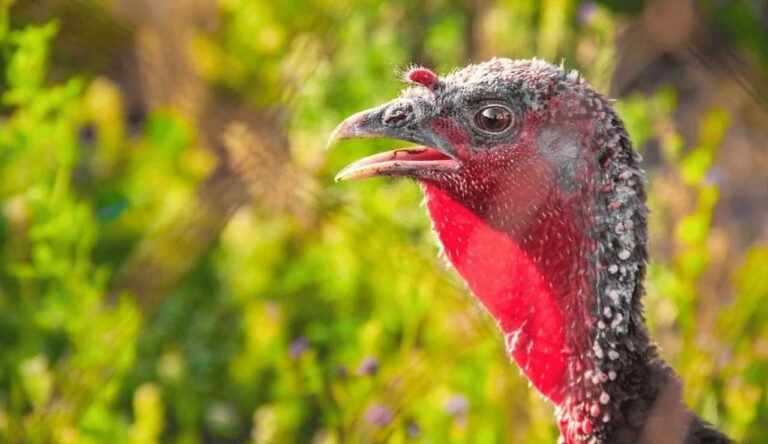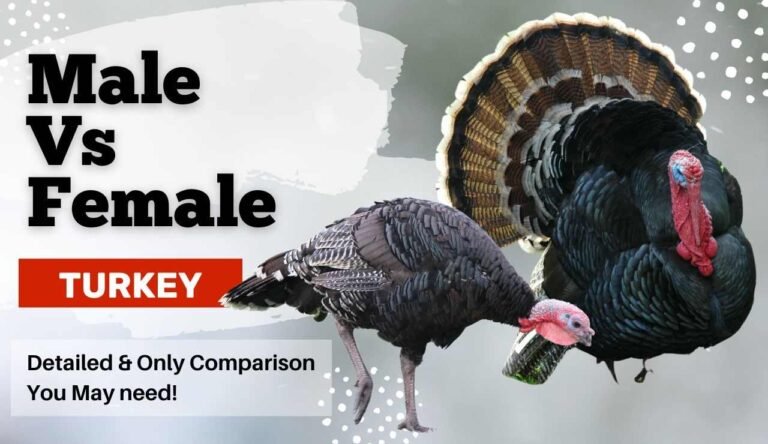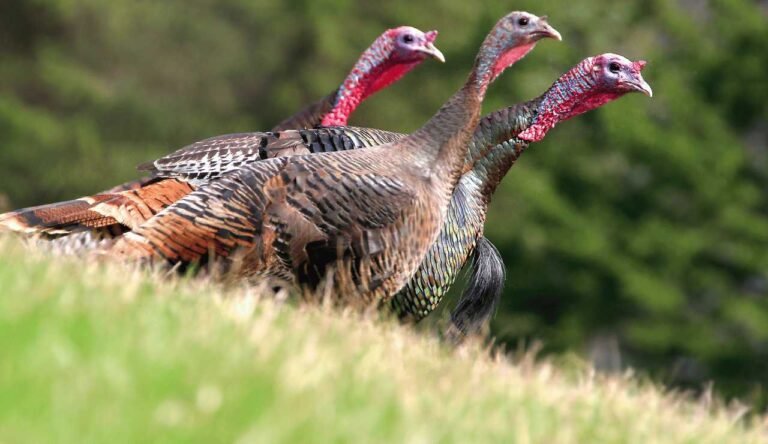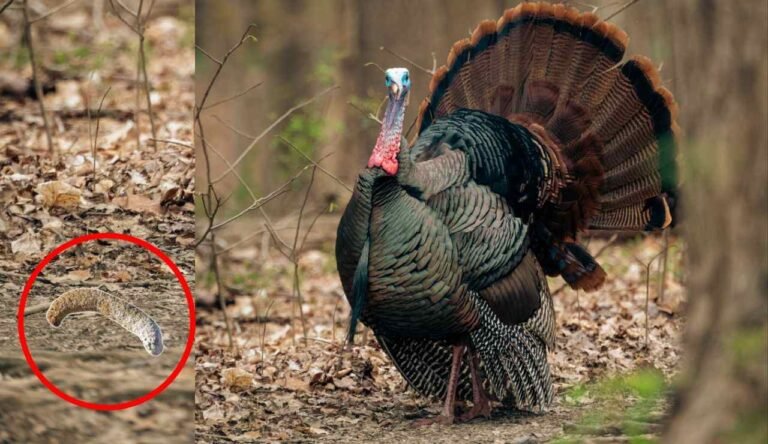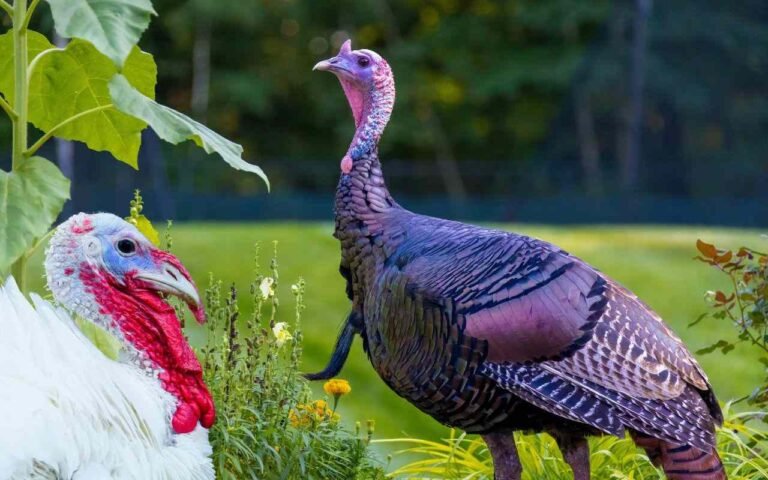How to Use a Turkey Mouth Call: A Simple Step-by-Step Guide to Using Mouth Calls Effectively
Welcome to our ultimate guide on “How to Use a Turkey Mouth Call“! Mastering the art of mouth calling will help you have a successful and enjoyable turkey hunting experience, whether you’re an experienced hunter or novice.
In this detailed guide, we’ll show you how to use a turkey mouth call, provide you advice, and teach you how to communicate to these smart birds. Let’s learn how to entice toms with high-pitched charm and enticing attractiveness!
Turkey Hunting: A Traditional Sport with Contemporary Elements
Outdoorsmen and women have been enthralled with turkey hunting for generations. Native American cultures that depended on wild turkeys as a crucial food supply are known to have mastered the skill of using mouth sounds to entice cunning gobblers. Today’s committed turkey hunters continue this age-old custom, although with some contemporary tweaks. Hitting your tag is simpler than ever thanks to new tools and strategies. To outsmart these cunning birds, however, turkey hunting still relies on skill and strategy at its heart.
The ability to master the turkey mouth call is still a necessary talent. Diaphragm calls may help you communicate with toms who are in love in the spring woods when utilized correctly. If you know their tricks, you can get even a gobbler under pressure to come within shooting distance. Let’s dissect the rudiments and subtleties of utilizing these adaptable instruments. You’ll soon sound like a seasoned expert with a little time and practice.
Understanding the Magic of Turkey Mouth Calls
Unlocking the Secrets Behind Diaphragm Calls’ Effectiveness
Diaphragm turkey calls use the natural acoustics of your mouth to create lifelike noises. When you lightly push with your tongue, a thin latex reed stretched over a plastic or aluminum frame vibrates. The reed accurately imitates a range of turkey vocalizations when air is forced over it.
The reed is positioned such that it rests on the inside of your mouth, close to the nasal canals. By shifting the position of your tongue and forcing air through your nasal canal, you may control the sound in this way. With enough experience, your voice and chest alone may be all that’s needed to make the reed vibrate. Your mouth will be free to imitate subtle inflections as a result.
Diaphragm calls are more adaptable than other designs. Experienced hunters may adjust them to varied hunting situations and bird behavior by adding stress to the reed. Additionally, you may utilize mouth calls hands-free, unlike box or slate calls. This makes handling your firearm safely simple.
Why Mouth Calls Reign Supreme for Turkey Hunters?
Diaphragm calls provide unmatched realism and ease for hunters searching for spring gobblers in beautiful forests. Unlike box calls, the sound emanating from your lips moves forward and reaches birds further away. Additionally, the adaptable reed handles damp conditions better than pot calls or friction surfaces.
Being hands-free is a huge benefit for hunters traversing difficult terrain and needing to maintain steady shooting form. You may have in-depth chats with lovesick toms because to the wide range of noises that are conceivable. This skill is crucial for hunters on public lands who must contend with pressed birds.
Mouth calls are very simple to store in your pocket or vest. As a result, they are never far away when birds make an unexpected noise. Mouth sounds are perfect for the dense western woodlands where turkey hunters forage because of their natural sound and stealthy appearance.
Understanding the Elements of a Turkey Mouth Call
Although there are some variations between manufacturers, all turkey mouth calls have the same anatomy:
| Component | Description |
|---|---|
| Frame | Laminated wood, metal, or plastic. It retains the reed and controls mouth call size. |
| Reed | Sound-producing thin latex membrane. Its thicknesses vary by tone. |
| Coverts | Latex flaps cover the reed and assist manipulation while calling. |
| Wedge | Placed between the reed and frame to modulate reed tension, which influences call pitch and sound. |
| Lanyard | A cord to link the mouth call to a hunter's vest or neck for quick access and recovery. |
| Protective case | A case that protects the mouth call to prevent moisture damage. |
It would be easier for you to choose a design that fits your tastes and hunting style if you are aware of each component. It also assists in resolving any problems that may arise with your call.
Choosing the Perfect Mouth Call for Your Hunt
Decoding the Different Types of Mouth Calls Available
It is helpful to divide mouth calls into three groups since there are so many available choices:
| Type | Description | Suitability |
|---|---|---|
| Single reed | One reed style that vibrates more noticeably. simpler to utilize for novices. | Suitable for beginners. |
| Double reed | Two reeds that are thinner and provide delicate subtleties. Advanced and customizable. | Suitable for advanced users. |
| Triple reed | The three reeds having the widest sound spectrum. more difficult to master. | Suitable for experienced users. |
For versatility, the majority of hunters depend on double- or triple-reed versions. Single reeds lack complexity yet are effective for simple calling and location. The trade-off between complexity of usage and realism depends on the quantity of reeds.

Choosing the Best Mouth Call Materials for the Best Results
The primary structure of turkey mouth calls is made of wood, metal, or polymers like acrylic or polycarbonate:
| Material | Description | Characteristics |
|---|---|---|
| Wood | Natural material with good resonance. | Resonates effectively, however moisture may reduce durability. |
| Aluminum | Durable metal with a crisp, loud call. | Loud cries are produced, but is prone to freezing. |
| Plastics | Resilient synthetic materials. | Acrylic increases volume, but polycarbonate is weatherproof. |
The reed material also affects sound:
| Material | Description | Characteristics |
|---|---|---|
| Latex | Most typical for its elasticity and resistance to dampness. distinctive harsh hen noise. | Flexible, moisture-resistant, produces raspy tones. |
| Rubber | More resilient yet more difficult to control. produces tones with a louder, higher pitch. | Durable, harder to manipulate, produces loud, high tones. |
When choosing call construction, take into account factors such as the climate, dampness, and wear. Before upgrading, wood and latex form a great starter combo.
Finding the Right Fit: Selecting the Ideal Mouth Call Size and Shape
To match various oral anatomy, mouth call frames varies in length from 1.5 to over 2 inches:
| Frame Size | Description | Characteristics |
|---|---|---|
| Smaller frames | Perfect for young hunters and those with tiny lips. Quieter yet more manipulable. | Easy to use, smaller mouths, quieter calls. |
| Medium frames | 1.75 inches long, fits most adult hunters. Balances comfort and loudness. | Fits most adults, comfortable, modest volume. |
| Over-sized frames | For hunters with larger mouths. Harder to use but projects sound farther. | Fits bigger lips, tougher to maneuver, projects sound further. |
The shape or cut of the frame also influences ease of use. Popular options include:
| Shape | Description | Characteristics |
|---|---|---|
| Rectangular | Parallel-sided straight cut. Beginner-friendly. | Simple design for beginners. |
| Curved | Comfortable contoured form fits mouth roof. | Improves mouth comfort. |
| Steeple | Angled middle peaks facilitate tongue-reed contact. Advanced reaction. | Innovative tongue control design. |
To discover your best fit before purchasing, try on sizes at your neighborhood outdoor store. Don’t enlarge it in the hopes that it will be louder. Concentrate on deft handling.
Mastering Mouth Call Techniques for Optimal Results
Step-by-Step Guide to Positioning the Call in Your Mouth for Precision Calling
Laying the groundwork for skilled calling is proper placement. When placing your mouth call, remember to:
| Steps | Description |
|---|---|
| Open wide | Mouth should be broader than for normal speech or singing. |
| Insert frame behind upper teeth | Behind your upper teeth, the frame should fit nicely. |
| Seal lips around frame | Control airflow by softly pursing lips around the call. Avoid squeezing. |
| Position tongue on reeds | To make sound, gently lay the tongue on the reed base. |
| Close off nasal passage | Close the nasal passage to guide air over the reeds and through the mouth for the desired sound. |
Adjust the call gradually until it is well seated. Without any stress or jaw pain, you want a firm seal. Insertion should be practiced until it comes naturally.
To produce lifelike turkey sounds, tongue pressure and airflow must be adjusted.
Once the call is placed correctly, skilled manipulation distinguishes amateur from professional. Observe these two essential methods:
- Tongue Pressure: The reeds are compressed by your tongue to produce sound. To change the tone, try alternate places at the base, center, or tip. Realistic calls need swift, light strokes.
- Airflow: Breathing from the diaphragm will allow you to direct continuous airflow over the reeds. But don’t blow too forcefully. Pitch shifts result from controlled exhales that move at different rates.
Find your tongue’s sweet spot to get the reed to vibrate freely without getting it choked. To master volume control, softly buzz the reeds while exhaling slowly. Try to be consistent between calls.
Your ability to seamlessly switch between yelps, clucks, and purrs will soon be controlled by muscle memory. To achieve that harmony between the tongue and airflow, be patient and practice often.
Secret Tips from Seasoned Hunters to Improve Your Calling Skills
When learning the subtleties of turkey call, experience is the greatest instructor. But the following expert advice may shorten your learning curve:
| Tips | Description |
|---|---|
| Record yourself | Compare your calls to real turkeys and improve. |
| Watch tongue position | Calling using a mirror ensures accurate tongue technique. |
| Vary call tones | To make turkey sounds like talking, emphasize and inflect. |
| Make it second nature | To build muscle memory, practice turkey calls while driving or watching TV. |
| Learn one call at a time | Master basic yelps before learning more complicated calls. |
| Listen to experts | Learn from veteran callers at seminars or while hunting. |
| Practice patience | Turkey calling requires practice like any instrument. |
With frequent, brief practice sessions, you’ll soon be yelling like a hen!
Creating Turkey Magic: Mastering Essential Calls
The Yelp: From Basic to Advanced Techniques for Realistic Turkey Communication
The go-to call for turkey hunters is the yelp. a boisterous call that hens use to call mates and communicate across long distances. The rapid reed shaking gives it a raspy, vibrating sound.
To yelp, place your tongue in the middle of your mouth and cry “hep!” out loud.By sliding the tongue up or down the reed, you may alter the tone. Make each blast of 2–5 notes last 1-3 seconds.
Include erratic rhythms, varying note durations, and inaccurate notes for realism. Try not to sound robotic. Strive for nature’s spontaneity.
Volume matters: It’s important to call softly at first as a hen searches for partners, then call louder if necessary. For roosted toms, amp it up to project over valleys. Gobblers are tricked into believing hens are creeping closer by whisper yelping.
Advanced yelping: Change notes and mix noises from the major and minor keys. Calls should be spaced erratically apart, and loudness should be raised gradually. This incites rivalry and makes a hen seem frantic.
Explore different variations including sigh yelps, disturbed yelps, and eager loud single notes after you’ve mastered basic yelping. Develop these sophisticated strategies to persuade gobbling couples that you are the perfect turkey match.

Unveiling the Purr: Gentle Sounds that Entice Even the Most Cautious Toms
| Purring Technique | Description |
|---|---|
| Purpose | The purr is a gentle, vibrating sound that imitates content hens. It's used when turkeys seem nearby but cautious. |
| How to Purr | Apply very light tongue pressure near the base of the reed. |
| Blow steady, low-volume airflow and produce soft "brrrr" or "prrr" sounds. | |
| Varying the Purr | Vary the speed, intensity, and duration of purrs, alternating between long, trusting purrs and shorter "come hither" coaxes. |
| Incorporate clucks or soft yelps to simulate a relaxed hen inviting her mate to join her. | |
| Effectiveness | The purring technique is irresistible to cautious toms and can entice them to fully commit. |
Perfecting the Cluck: A Versatile Call for Different Turkey Scenarios
The position of a turkey may be determined by listening for its brief, clicking cluck. When you want to gently ping a gobbler to determine proximity and interest, it’s less intrusive than yelping. Clucks may be used as linguistic traps.
To cluck: Apply quick, strong tongue pressure at the reed’s base and exhale to produce a loud, single “click” sound.
If you are unclear of a tom’s whereabouts, use clucks as radar. Your location is signaled by two or three clucks. Incorporate them with other calls to draw attention to them and make them seem conversational. Clucks are an essential calling technique because of their adaptability.
Advanced Techniques: Cutts and Kee-Kees
The Cutt: Using Aggressive Cutting Sounds to Up Your Calling Game
- The Cutt: To undermine a tom’s confidence, this forceful calling approach implies dominance and danger.
- How to Cutt: To make the reed “cutt” quickly on and off, apply firm pressure close to the tip and blow powerful bursts of air.
- Use Moderation: Cutts might come out as aggressive and needy when overcalled. When cutts are timed correctly, they promote competitiveness in the tom.
- Follow Up: After cutts, as your “hen” attempts to re-engage her partner, use begging yelps or clucks to mimic an aggressive competitor coming.
- Mind Tricks: Use this contrast to entice envious toms into action and elicit a reaction.
Kee-Kee Calls in the Fall: Luring in Young Turkeys With High-Pitched Charm
- How to Kee-Kee: To kee-kee, forcefully press the tongue tip on the end of the reed. Quickly raise the tongue on and off the reed while forcing small bursts of air, producing sounds that oscillate up and down the octaves like a scared chick.
- Target Juvenile Birds: In the autumn, kee-kee sounds are helpful for hunting juvenile turkeys.
- Consider a Special Call: For improved kee-kee call mastery, use a smaller single-reed call that is tuned extra high.
- Attract the Boss Tom: Make a young, distressed turkey chick-like noise to sound fragile and alluring to the protecting boss tom.
Combining Calls for Masterful Sequences That Enthrall Gobblers
After becoming familiar with different calls, it’s time to put together combinations. Showing off your vocal prowess by using a variety of tones, volumes, and cadences keeps listeners interested.
Following are some common sequences:
• Yelping, clucking, and purring
• From purrs to shouts of joy
• From kee-kees to desperate yelps to clucks
• A loud, attention-getting yell followed by a quiet, loving purr
Sequences intensify as the birds get closer, like a crescendo. Gobble notes at the right moments for maximum effect. Sell that you’re enamored yet reserved, unsure of whether it’s safe to go near just yet. This increases interest and persuades him that you are worth the effort.
Calling Strategies for Different Turkey Hunting Situations
Tricking Turkeys While Staying Covered: Advice for Calling From a Blind
Blind calling skillfully enables you to bring birds in close while staying covert and prepared to shoot. Follow these tested advice:
| Tips for Calling From a Blind | Description |
|---|---|
| Use a clear line of sight | Place the blind to see incoming birds. Avoid calling them from behind. |
| Keep calls subtle | Use soft clucks, yelps, and purrs around birds. |
| Watch bird behaviors | Binoculars might help you alter your calls. |
| Let them come to you | Avoid frantic calls. Hide as the birds close the gap. |
| Have confidence | Avoid overcompensating with hyper-aggressive calling sequences. |
Blinds may be used lethal conduits to lure spring toms into range while evading their alert eyes with experience.
Run and Gun Calling: Effective Techniques for Mobile Hunters
| Tips | Description |
|---|---|
| Use wind wisely | Prevent early discovery by avoiding gobblers downwind. |
| Be loud | Project distant calls to start dialogues. |
| Take the lead | Call assertively initially to control the conversation. |
| Anticipate movements | Use topography and gobbles to predict bird direction. |
| Use obstacles | Call aggressively while hiding behind a ridge. |
| Have a game plan | Based on birds' responses, intercept them. |
It may seem paradoxical to aggressively pursue vocal turkeys, yet doing so may have significant benefits. Next-level turkey hunting involves confidently guiding birds with your calls while relocating for the perfect setting.
Hail Mary Calls: How to Bring In Distant Gobblers With Expert Calling
It occurs. A tom may be heard gobbling faintly over a mile distant. Try these expert suggestions to attract far-off gobblers:
| Tips | Description |
|---|---|
| Move closer | To enhance call reception, discretely reduce distance. |
| Get above them | Ridges and mountains carry higher-elevation calls. |
| Use a horn | A tube amplifies your mouth call naturally. |
| Stick with loud, simple calls | Instead of delicate purrs and clucks, emphasize excited, loud yelps. |
| Sound distressed | Imitate a distressed hen to attract birds. |
| Use attractor calls | Box sounds, crows, and owls attract birds from afar. |
When you least expect it, faraway turkeys may be attracted from astonishing distances by the right sound at the right spot. When confronted with overwhelming odds, think creatively.
The Art of Reading Turkey Behaviors and Responding Accordingly
Understanding the Gobbles, Clucks, and Yelps of the Turkey
Context is important in all conversations. To obtain information and fine-tune your calling technique, listen to and interpret turkey vocalizations:
| Turkey Sounds | Description |
|---|---|
| Gobbles | Gobble frequency, loudness, and inflection indicate the bird's distance, hostility, and interest. |
| Clucks and Yelps | Identify hen and tom calls. Toms cluck for supremacy, while hens shriek to gather. |
| Pitch Changes | To determine the tom's mood, listen for tone variations from guttural aggressiveness to high-pitched yelps. |
| Silence | Silence may indicate the turkey is attentive or aware of you. |
You’ll soon be able to identify turkey call trends and know just how to react in any situation.
Reacting to Turkey Reactions: Adapting Your Calls for Alternative Responses in Response to Turkey Reactions
Turkeys are unpredictable. Use the birds’ in-flight behavior to call
Turkeys don’t always go according to plan. Adapt your calling method based on the birds’ in-flight behavior:
| Turkey Behavior | Appropriate Calls |
|---|---|
| No Response | Increase the volume of the yelping. |
| Throw in a few loud whistles or cutts to draw attention. | |
| Losing Interest | To a soothing purr, downshift. |
| Use begging clucks to show weakness. | |
| Aggressive Response | Match ferocity with brash cuts that scream, "Bring it on!" |
| Hang Ups | Clucks or purrs may be used to gradually entice obstinate toms within shot distance. |
| Approaching Silently | Avoid calling too much; allow them to approach while remaining ready. |
Let the turkeys lead the conversation’s next course of action, just like any excellent conversationalist. Pay attention and act appropriately.
- Reading Body Language: Increasing Your Chances of a Successful Hunt by Understanding Body Language
- Look for visual cues when birds near: When birds are around, watch for visual clues such as tail fans, wing drags, struts, and other mating displays. These show if calling sequences are functioning.
- Erect tail fans: Signals of dominance and attention are raised tail fans. indicates that your setup is ready for action.
- Constant scanning: Birds that are feeding continuously examine the area for threats. To prevent spooking, keep your calls quiet.
- Aggressive postures: Toms adopt aggressive stances as they get ready for fight by strutting, drumming, and puffing up. Be prepared!
- Relaxed actions: Happy turkeys indicate a deal is done. Prepare for shooting shortly!
Binocular observation of turkey habits gives crucial background for your calling tactics. Are you listening to what their body language is saying?
Care and Maintenance: Ensuring Your Mouth Call Lasts
Daily Cleaning Rituals: Keeping Your Mouth Call in Peak Condition
Follow the rapid cleaning technique below to maximize call performance and longevity:
| Maintenance Steps | Description |
|---|---|
| Remove debris | For clean sound, remove food, lint, and debris from the reed. |
| Disinfect | Non-toxic call cleaning spray kills microorganisms and maintains hygiene. |
| Air dry | To avoid sticking and damage, let the reed dry completely before storing it. |
| Check function | Test calls to verify adequate sound. Replace warped reeds. |
Maintain your call by keeping it dry and clean as you would your contacts. takes just a few seconds but avoids failing too soon.
Off-Season Care: Preparing Your Call for Hibernation and Revival
Prep your call for storage during the off-season:
| Maintenance Steps | Description |
|---|---|
| Deep clean | Before storing, thoroughly clean and disinfect the call. |
| Dry and oil reed | Remove moisture and add reed oil to keep the call flexible and long-lasting. |
| Seal in case | Store the reed in an airtight container to avoid warping and damage. |
| Store properly | To preserve quality, store the call in a climate-controlled environment away from heat, cold, and chemicals. |
| Exercise reeds | To avoid sticking, carefully bend the reeds with tweezers. |
When the call comes in the next season, you may answer it with assurance and be prepared to again woo longbeards in love.
Troubleshooting Common Mouth Call Issues and Solutions
| Common Issues | Solutions |
|---|---|
| Warped reeds | To flatten and function the reeds, use wedges or shims. |
| Muffled, weak sounds | Replace dry reeds and examine frame fractures and deformation. |
| Sticking coverts | Cornstarch or reed lubricant helps latex move. |
| Reed damage | Adhere tiny rips and replace reeds for larger damage. |
| Freezing up | Antifreeze aluminum calls and warm them on your skin. |
| Buzzing sounds | Avoid buzzing by adjusting tongue location and pressure and not overblowing. |
A high-quality mouth call should last you for many seasons if you take good care of it.
Preparing for Turkey Hunting Success
Gear Essentials for a Successful Turkey Hunting Expedition
Beyond just calls, equip yourself for an effective hunt:
| Turkey Hunting Gear | Description |
|---|---|
| Binoculars | Essential for turkey scouting and understanding their habits. |
| Decoys | Simulates hens to lure cautious gobblers. |
| Camo | Wearing camouflage protects you from turkeys' acute eyes. |
| Blinds | Pop-up blinds hide and provide flexible hunting areas. |
| Tracking Gear | Equipment for locating injured turkeys that may not die quickly. |
| Comfort Essentials | To hunt comfortably, bring a chair, food, drink, and rain gear. |
It takes more than simply calling to be successful. To obtain an advantage, try to control as many factors as you can.
Mental Preparedness and Mindfulness in the Field
Beyond gear, focus on your mindset:
| Mindset Tips | Description |
|---|---|
| Practice patience | No matter how long it takes, stay focused and prevent impatience. |
| Remain optimistic | Keep hunting and don't give up too soon. |
| Expect adversity | Prepare for weather, land access, and bird behavior. |
| Stay mentally engaged | Concentrate to prevent missing hunting possibilities. |
| Remember safety | Avoid needless dangers when turkey hunting. |
| Have fun | Enjoy turkey hunting and calling challenges. |
Every hunt may become a personal success story with the appropriate mental attitude, whether you win or lose.
FAQs related to using turkey mouth calls
What are the primary benefits of a mouth call over other turkey calls?
Mouth calls allow for hands-free operation, convenient transport, and personalization through reed tension adjustments. Unlike friction calls, the sound comes out of the lips naturally. Mouth calls may be used by both beginners and specialists.
How can I practice using a turkey mouth call the most effectively?
Start by honing your distinct purrs, clucks, and yells. While managing your air flow, pay attention to your tongue’s position and the pressure you provide to the reed. Practice realistic sequences that resemble genuine turkey discussions after you’re familiar with the essential calls. By recording yourself, you can see where you need to improve.
How do weather conditions impact the effectiveness of mouth calls?
Metal or wooden mouth calls may “freeze up” in cold conditions and stop vibrating effectively. In the cold, latex reeds can get rigid. To keep the call warm, practice calling while wearing gloves. Latex reeds benefit from a little wetness, but prevent waterlogging. To keep the reed from sticking, lightly oil it.
How can the sound projection on a mouth call be improved?
To enable greater reed vibration, choose a call with a larger frame. Instead of using wood, acrylic or metal frames increase capacity. Use reeds that are thicker than average. Use a tube to naturally enhance the sound for the greatest possible range.
What are signs that a mouth call reed needs to be replaced?
Reeds ought should survive at least one season with regular cleaning. However, keep an eye out for sticking, obvious cracks or rips, deformed shapes, buzzing noises, range loss, and tuning instability. It’s a good idea to have additional reeds on available in case.
How should a turkey mouth call be stored between seasons?
Reeds and wedges should be totally removed from the call. Apply reed oil after carefully cleaning every component. Dry all components completely before storing the reed in an airtight hard case till the next season. Reeds should be periodically bent with tweezers while being stored to avoid sticking.
- Florida Turkey Season 2025-2026: Latest Hunting Dates, Licenses & Rules Available! - October 16, 2025
- Delaware Turkey Season 2025-2026: [Everything You Need to Know Dates, Regulations, Bags & More] - October 16, 2025
- Connecticut Turkey Season 2025-2026: [Dates, Regulations, Bag Limits & More] - October 16, 2025

